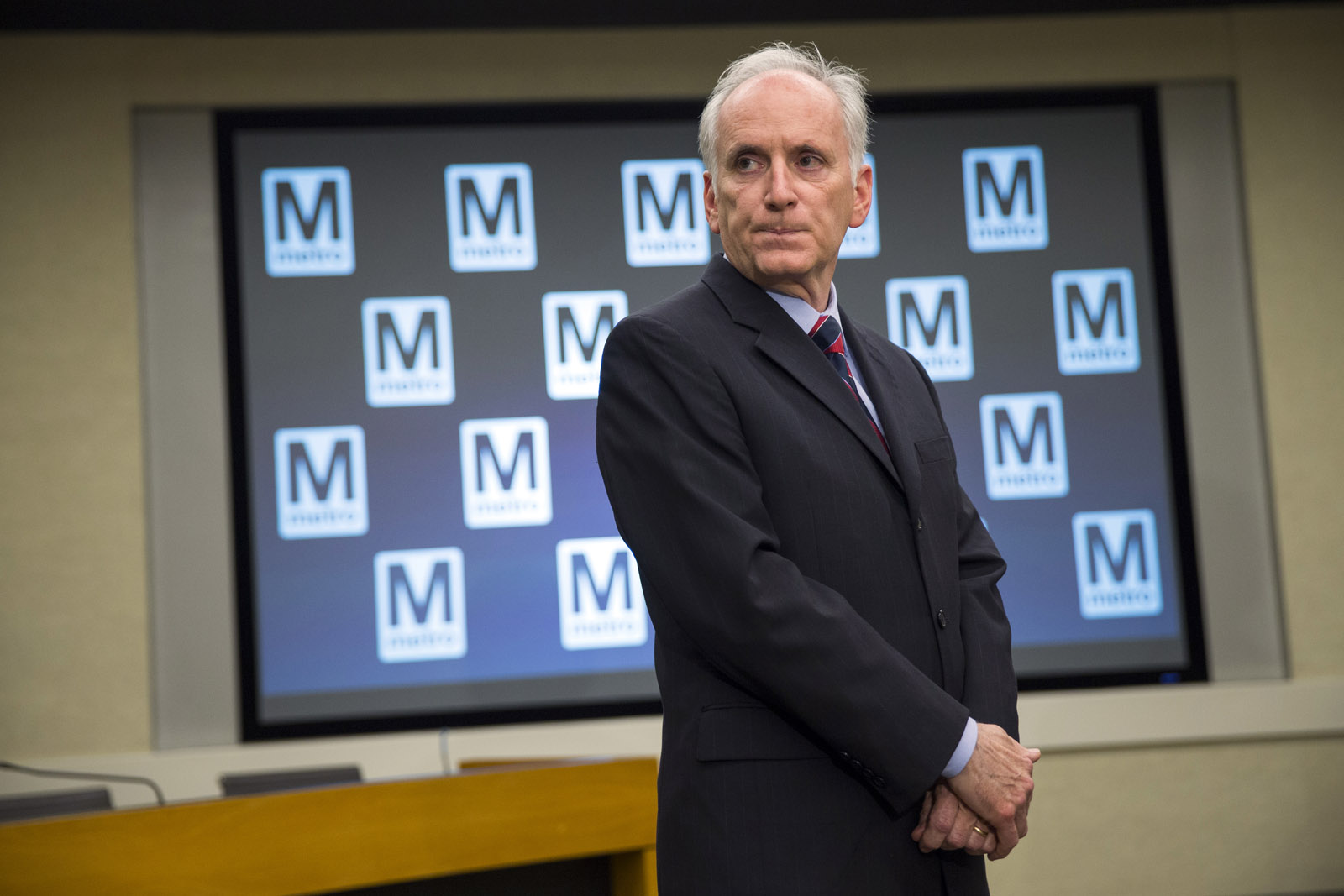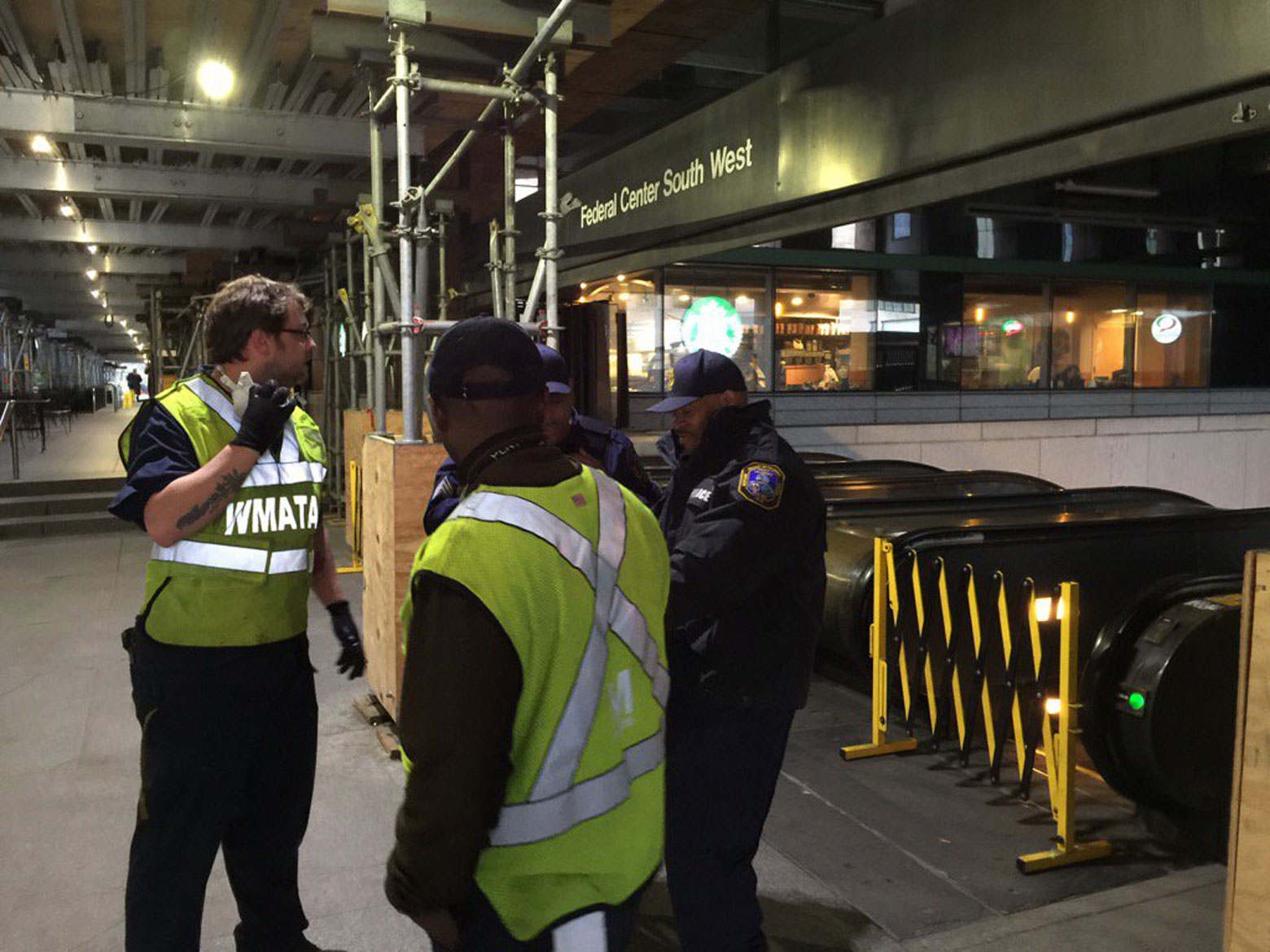WASHINGTON — Major Metro track work that will hit rush hour and more over the next 10 months will not be enough to eliminate many problems Metro riders are familiar with, Metro Board Chairman and D.C. Councilman Jack Evans said.
“At the end of the year, it’s not the end. It’s not even the beginning of the end,” Evans said. “At best, it’s the end of the beginning. We have a long way to go to fix Metro, but this is a first step.”
Metro General Manager Paul Wiedefeld echoed the warning that after 15 “surges” — which include a week or more of round-the-clock single-tracking or similarly lengthy shutdowns that will impact hundreds of thousands of commuters — “it [the Metrorail system] will be better, it won’t be perfect.”
This weekend kicked off a year of massive repairs, intermittent shutdowns and service cuts in order to improve Metro’s aging rail system. The work will focus on basics, such as rebuilding tracks that, in some cases, have not been completely overhauled in 30 years or more.
Evans and Wiedefeld said issues with rail cars and stations are not directly addressed by the plan, which also includes extended track work at night, in the middle of the day and on weekends.
Metro will close at midnight on weekends for at least the next year. Metro has said that will allow more time for regular maintenance.
“At the end of a year’s worth of work, we are not going to be there,” Evans said. “We are going to have a safer system, hopefully a more reliable system, but there are enormous challenges ahead of us.”
“So, I want to caution everybody not to expect a brand-new system a year from now, but a system that is better than the system that we have today,” he added.
Monday morning is the first rush hour that will be impacted by the round-the-clock work.
The first work zone is on the Orange and Silver lines tracks between Ballston and East Falls Church.
While riders using stations along the entire Silver Line and much of the Orange Line will be affected, the most significant service cuts are at stations west of Ballston — Vienna; Dunn Loring; West Falls Church; East Falls Church; Wiehle-Reston East; Spring Hill; Greensboro; Tysons; McLean — and east of Stadium-Armory — Largo Town Center; Morgan Boulevard; Addison Road; Capitol Heights; and Benning Road.
That is because trains are only scheduled every 18 minutes on the Silver Line and every 18 minutes to and from Vienna on the Orange Line in order to try to keep trains moving in each direction through the single-tracking zone once they leave the end of the line.
Additional Orange Line trains are planned for peak of rush hour periods between Ballston and New Carrollton, but Metro still expects longer waits than usual on platforms downtown and more crowding.
Evans asked riders and others affected by the 24/7 work zones scheduled to last through March 2017 to offer feedback on how things can go more smoothly.
“Metro, itself, will be on top of all of the suggestions, and I want to encourage the riding public to let us know — this is an unfolding event — how can we do this better over the next year to make this work for everybody,” Evans said.







